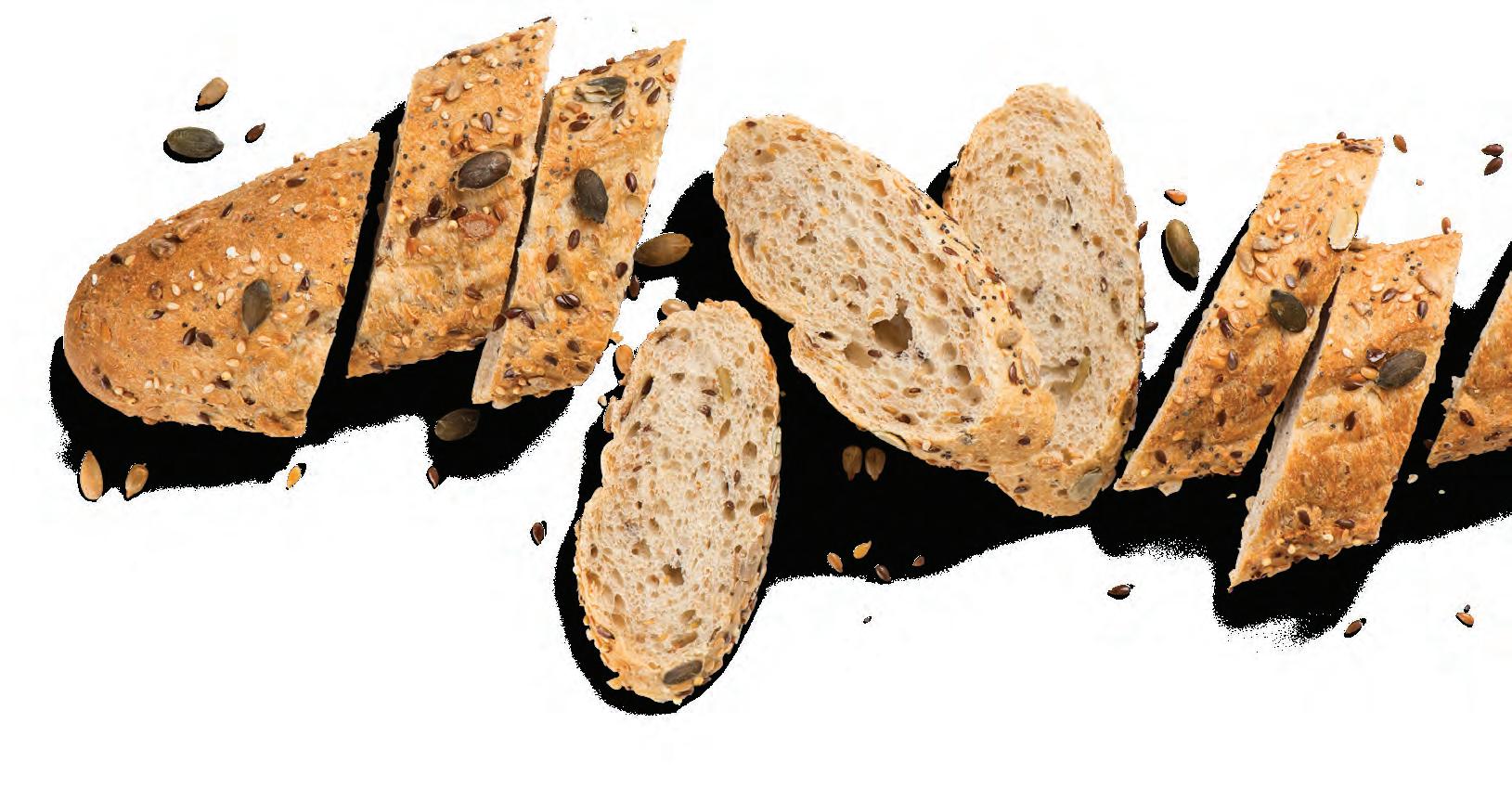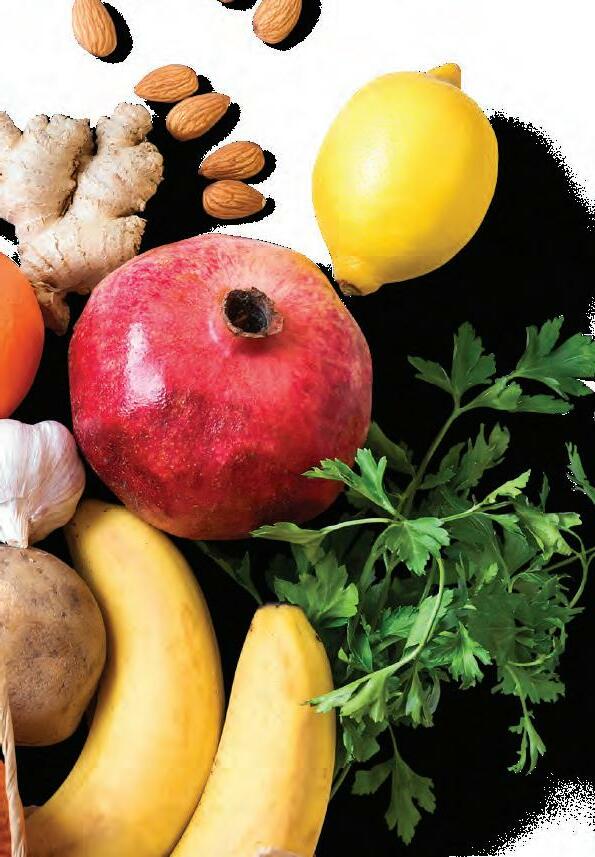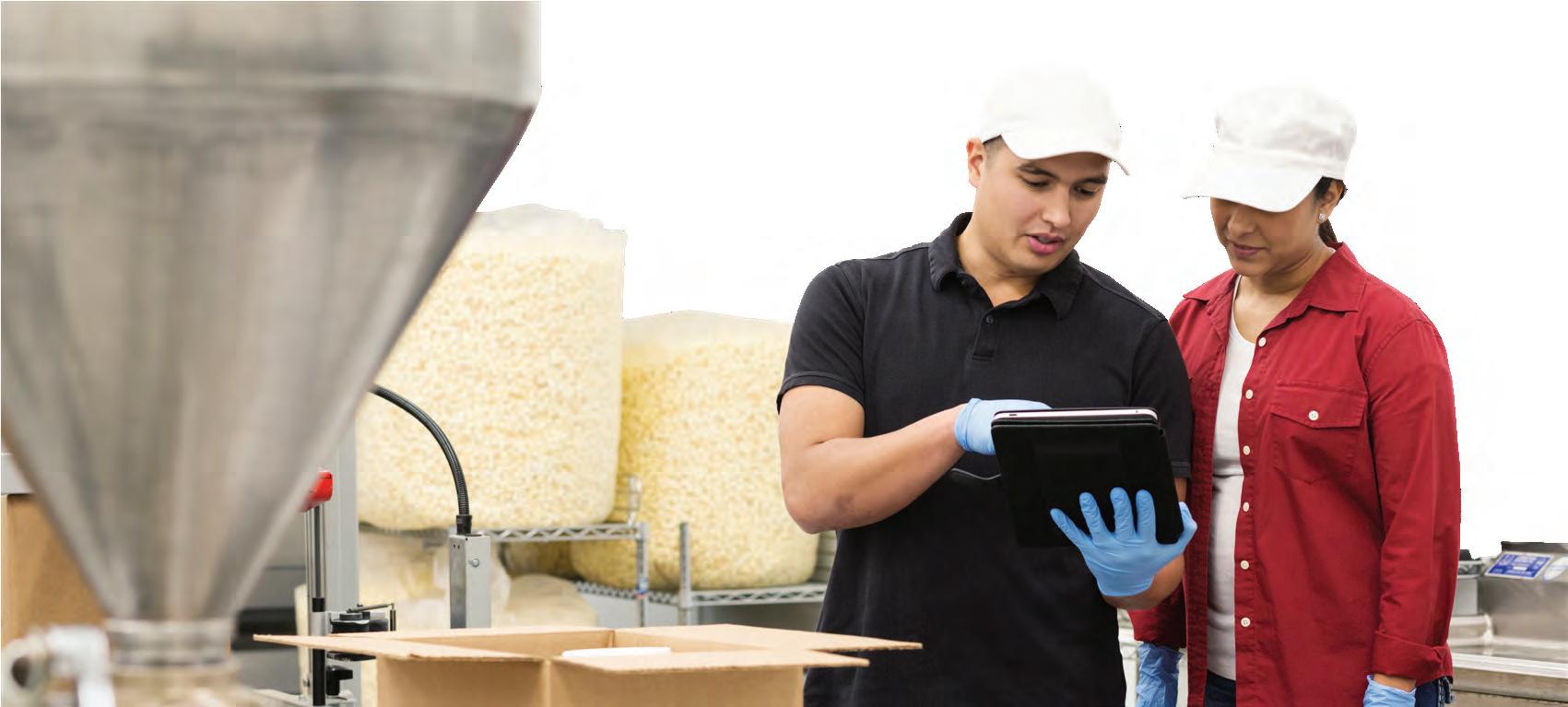

A Food Manufacturer’s Guide to Traceability Software
Leveraging modern solutions for complete visibility and control
Is your business doing enough to ensure traceability? You likely know well the steps and precautions you need to take to comply with global food safety initiatives—but when it comes to lot tracking and recall contingencies, there’s a chance that the right software solution could give you greater control and peace of mind.

Before we get to that, though, an important first step is getting familiar with these key safety agencies:
• Global Food Safety Initiative (GFSI)
• Safe Quality Food Institute (SQFI 2000)
• Food Safety System Certification (FSSC 22000)
• BRC Global Standards
• GS1 Global Traceability Standard (produce-specific)
• Institute of Food Technologists (IFT; established by the FDA to examine the microbiology aspect of food safety)
• Supply Chain Council (SCC; targets improvements in supply chain management)
With so many interested parties and standards to meet, it’s clear that food safety needs to be a priority. And that’s where traceability comes in.
Your food traceability solution likely captures a lot of data, but the ideal system would capture the entire history of items, lots and serial numbers, all in a single interface.
Not all product tracing systems are equal
As a food manufacturer, your business likely has a product tracing system of some sort, but it’s a good idea to examine just what it can do. Ask yourself the following regarding your platform:
• Just how much information can the system record? Does it include nutrient info, point of origin and production scheduling?
• How far forward and backward in the supply chain does the system track?
• Exactly how precise is the system when it comes to tracking a product’s movement?
• What technology maintains your records?
In addition to these considerations, the accuracy of the system’s tracing is critical. We know your goal is to scale up your efforts and grow—but you need the ability to act with efficiency and precision in the event of a recall.
Prevention and proof
Why deal with tracing and recall when you can prevent problems from occurring in the first place? Obviously, not all issues are foreseeable, but a holistic approach to food safety incorporates both traditional record-and-response measures as well as prevention-and-proof.
Here’s what that entails:
• Built-in quality audits at various stages of material movement, recorded and retained
• Preventive maintenance of equipment and facilities
• “First expiry, first out” inventory picking
• Inventory expiry analysis of raw materials and finished goods
• Nutrient tracking to compare with government-recommended values
• Full food safety reporting and document retention to satisfy external audits
Product traceability is vital for the compliance of food manufacturers as well as the safety of customers. That’s why equipping your business with the most robust solution on the market is the right decision.
• Automated recording of dates of receiving, movement, transfers, picking and staging
• Allergen recording
• Tracking lot numbers of ingredients and recording any changes to them
• Recording all relevant tests, production activities, inspections and incubations
• Complete finished good shipment data, including lot number, name, address, phone number, email, transportation carrier, bill of lading number, mode of transportation, date of delivery and COA
• Complaint management system
How deep is your level of detail?
Your food traceability solution likely captures a lot of data, but the ideal system would capture the entire history of items, lots and serial numbers, all in a single interface. These standards should be considered as the necessary level of detail:

• Every transaction must be tracked, from the time the item/lot/serial is purchased or produced to the moment it leaves your facility—and that includes internal movement within the warehouse.
• All transactions should also be tied to the employees that performed them, in case an audit of processes and procedures is needed.
• The date and exact time of each transaction should be recorded. Aptean’s Food & Beverage enterprise resource planning (ERP) solution has this critical functionality.
These are some other critical measures to take:
Lot tracking for raw materials
Going as far as assigning the level of lot numbering to the items you purchased as raw goods is important, even if the vendor doesn’t provide this. Imagine a vendor informs you of an issue with a product of theirs that you received a week prior—you’ll need this level of lot traceability to pinpoint exactly what product in the shipment is the problem. You’ll also be able to see at a glance what other shipments contain that product.
Lot tracking by shift
You don’t want to be stuck going through an entire day’s worth of inventory when only one shift’s products need to be recalled. Assigning new lot numbers with each shift gives you the precision you need and reduces effort in the event of a bad run.
Allergen tracking
Complete traceability on your ingredients and products containing allergens isn’t enough—you need to know which items those raw materials came in contact with so that you know which products might have allergens at the trace level.

Tracking goods from other countries
Country of origin is also a critical data point to track and retain throughout your manufacturing process. As part of the Food Safety Modernization Act (FSMA), exporters and importers of food in the U.S. are required to demonstrate proof of compliance, and food suppliers must show proof of meeting U.S. standards for food production and distribution safety in order to sell food in the U.S.
How fast are your product recalls?
The FDA is now mandated to conduct product recalls in the event that:
• The food became contaminated (any stage in the supply chain)
• Unlisted allergens are present
• The product came in contact with an allergen during processing
• Foreign materials were found in batch
• Current Good Manufacturing Practice (CGMP) regulations weren’t followed
The U.S. government requires that recalls are initiated within 24 hours of an issue being identified, but have you considered how the right software solution can accelerate the process? Aptean’s Food & Beverage ERP has bi-directional product recall functionality, taking advantage of lot tracing data from the material level and up. It also integrates with Microsoft Word and Outlook, allowing you to get the word out via official letters and alerts to consumers quickly.
QR codes for tracking
Forget traditional bar codes and scanner guns—QR codes can carry much more data and are just as easy to use. Use of this technology is particularly important for fresh pack and produce growers, as QR codes can capture data from all along the supply chain. Aptean’s Food & Beverage ERP features an add-in that allows the system to create and use QR codes, and from there they can be placed almost anywhere in the Microsoft Dynamics environment.
In the end, it’s clear that product traceability is vital for the compliance of food manufacturers as well as the safety of customers. That’s why equipping your business with the most robust solution on the market is the right call—so learn more about what we can do for you!

Are You Ready to Learn More?
Interested to see how Aptean Food & Beverage ERP can help you better manage your food company?
Contact us at info@aptean.com or visit www.aptean.com.
About Aptean
Aptean is one of the world’s leading providers of industry-specific software. Our enterprise resource planning and supply chain solutions are uniquely designed to meet the needs of specialized manufacturers and distributors, while our compliance solutions serve specific markets such as finance and life sciences. With both cloud and on-premise deployment options, Aptean’s products, services and unmatched expertise help businesses of all sizes, across many industries, to scale and succeed. For more information, visit www.aptean.com.
Aptean
